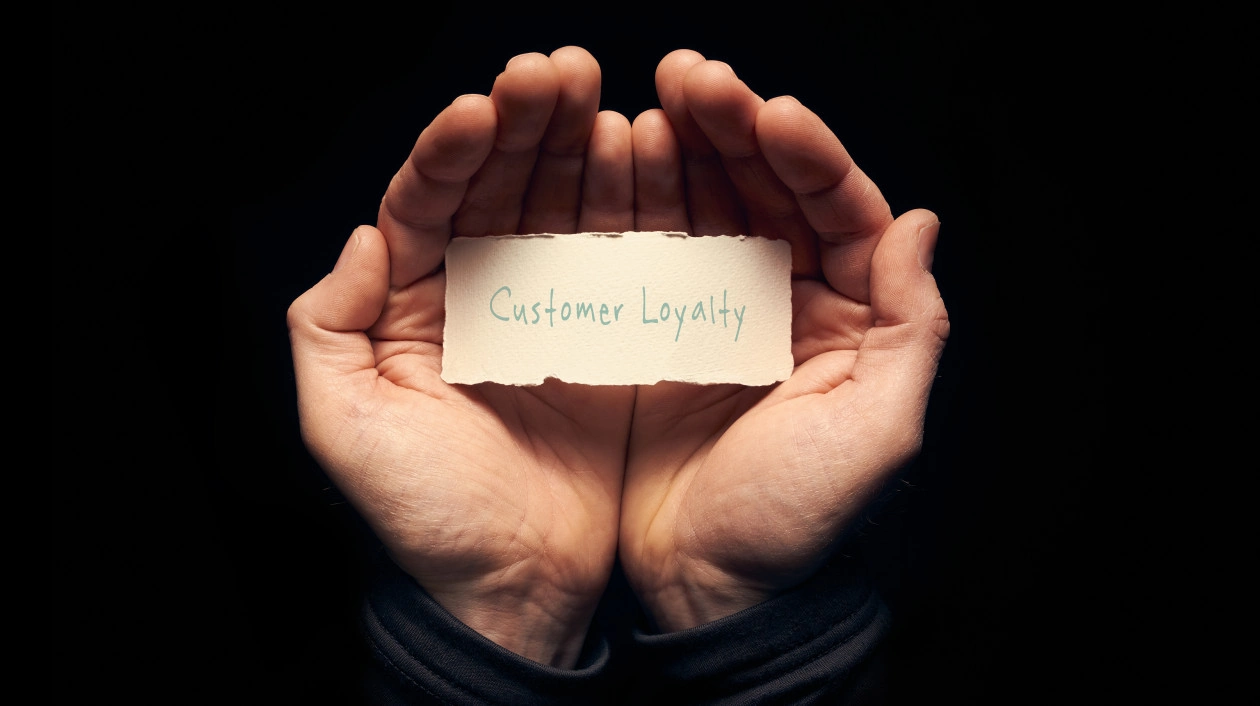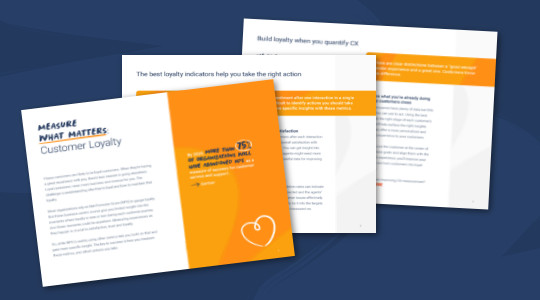Your Genesys Blog Subscription has been confirmed!
Please add genesys@email.genesys.com to your safe sender list to ensure you receive the weekly blog notifications.
Subscribe to our free newsletter and get blog updates in your inbox
Don't Show This Again.

A bad customer experience is more than frustrating. For some consumers, just one bad experience — a dropped call, dead-end bot or delayed delivery — is all it takes for them to switch to your competitor. That’s why customer loyalty is essential: because it helps your business retain customers over the long term.
According to “The connected customer experience,” 70% of consumers globally believe a company is only as good as its customer service. And here’s the thing: Customer expectations are rising faster than most companies can keep up. Digital channels have broad penetration and younger generations show a strong preference for mobile or unassisted channels such as chatbots and voicebots.
Yet many organizations are lagging when it comes to digital transformation. Most businesses offer multiple interaction channels that run alongside each other. Less than one-sixth have connected the technology and data in a way that reduces customer effort and supports real-time personalization — whether that comes from a human or self-service tool.
So how do you delight your customers in a rapidly evolving experience economy? Let’s explore the subject of customer loyalty, why it’s critical to your long-term success, how to keep your customers happy and how to measure their loyalty.

Loyal customers are like die-hard fans of a professional sports team — they support your brand, advocate for your organization, and are more willing to spend their money on your products and services.
Loyal customers exhibit some similar traits.
More likely to buy from you: Humans are more receptive to people they already know, compared to someone they’ve just met. And research shows you have a 60–70% chance of selling to an existing customer — compared to a 5–20% chance of selling to a prospective one.
Will spend more money: Existing customers spend 31% more on average than new customers.
More likely to try out a new product: Research shows that existing customers are 50% more likely to buy new products.
More likely to refer others: Happy customers can become brand ambassadors who tell their family, friends and colleagues about your company. This word-of-mouth marketing drives more referral traffic. Happy customers also tend to share positive product reviews on social networks.
More trusting of your organization: Positive experiences with your organization build consumer trust over time. Trust can be earned in numerous ways — from a quick response to a customer service interaction to a company’s transparency about how they handle customer data. And as more cybersecurity and digital resilience regulations take effect in 2023 and beyond, establishing digital trust will be critical to maintaining customer loyalty.
Consumers want to be remembered, heard and understood. They expect convenient, personalized service that enables them to seamlessly move between connected channels and interactions. And they want their issues solved quickly in the first interaction.
According to “The State of Customer Experience,” delivering the exceptional in every interaction requires Experience Orchestration: coordinating people, interactions, knowledge, data and systems in real time to deliver empathetic end-to-end experiences. This involves three key priorities:
Most companies rely on metrics like Net Promoter Score (NPS) to gauge their service and support performance. But these metrics have limitations; they’re often used to gauge sentiment after one interaction, but fail to provide insight into full journeys.
Businesses are starting to recognize the limitations of NPS. In fact, over 75% of companies will have abandoned NPS as a measure of success for customer service and support by 2025.
Many companies worldwide are realizing the importance of empathy in improving their service and support. Eighty-six percent of surveyed executives agree that listening to the customer — understanding and relating to their perspective; really hearing what they’re saying and truly addressing their concerns — is a critical if hard-to-measure component of delivering outstanding CX, according to a research report by Harvard Business Review Analytic Services.
Experts cited in the HBS report offer tips for improving an organization’s measurement capabilities.
Be selective in what gets measured: Don’t start by measuring everything. Rather, map the customer journey and then identify the moments in that journey that matter most to the customer. Then adapt your measurement framework as you gain insights — and expand it over time to ensure you’re capturing information at every critical touchpoint across the journey.
Scrub your data and make it easily accessible: Ensure your data is complete, correct and accurate by devoting time and energy to data cleansing. Otherwise, you could miss out on valuable insights from your CX metrics.
Embrace technology — and people: You need human beings such as data scientists and behavioral experts to maximize the benefits of new technologies. Hire people who can think deeply about problems and use data to test their beliefs about customers and how to provide a better experience.
Guard against personal biases: Rather than believing you know what customers want, keep an open mind and let customer feedback and sentiment guide you.
Incentivize employees to act on insights: Empower employees with the right information, at the right time, to act on the insights you gain — and incentivize them to do so. This creates shared accountability in enhancing CX.
Regardless of what industry you compete in, you’re in the people business. Your customers crave empathy more than efficiency. And they want personalized interactions that make them feel remembered and valued — regardless of the channel, time of day or any past interactions.
To grow your customer base, you’ve got to understand how your current customers and prospects feel about your brand. By using the best metrics at the right stage of each customer’s journey, you’ll surface the right insights so you can offer a more personalized and positive customer experience.
Subscribe to our free newsletter and get blog updates in your inbox.